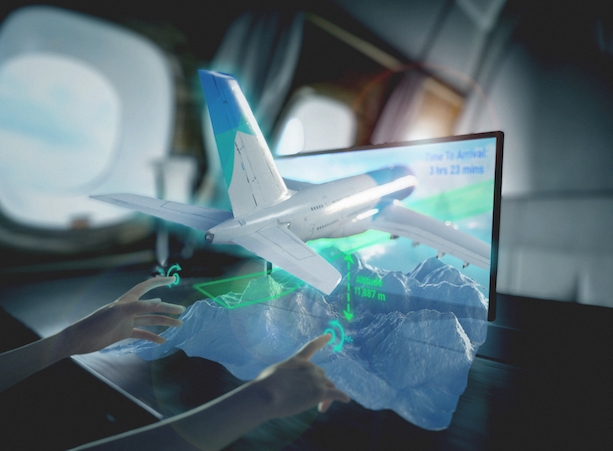VividQ claims to have figured out how to convert regular LCD screens into holographic displays. VividQ is a tech startup based in the United Kingdom that has developed technology for rendering holograms on older screens. VividQ’s Computer-Generated Holography is driving the display revolution. It’s software and IP enable next-generation digital displays to deliver realistic and immersive visual experiences. With a Computer-Generated Holography that projects “real 3D pictures with true depth of field, making displays more natural and immersive for users,” the startup is aiming its technology at Automotive HUD, head-mounted displays (HMDs), and smart glasses.
VividQ provides industry-leading software and intellectual property for CGH display applications, such as Augmented Reality wearables and Automotive Head-Up Displays (HUD). On low-power devices, it computes holograms in real time and integrate them with off-the-shelf display technology.
They published Version 5.0.1 of their Software Development Kit in July 2021. The SDK’s core component is a brand-new hologram generating algorithm. VividQ SDK has improved since its initial release in 2019, attaining consistently improving compute performance when generating 3D holograms with even higher image quality to the eye. The new “Triton” algorithm works in tandem with two completely new, licensable hardware designs to significantly improve three aspects of holographic display: contrast, despeckle, and colour balancing.

Also Read:
Sony’s 360 Spatial Sound Mapping technology delivers our widest ever surround sound.
[email-subscribers-form id=”1″]
“Scenes we know from films, from Iron Man to Star Trek, are becoming closer to reality than ever,” Darran Milne, co-founder and CEO of VividQ, said. “At VividQ, we are on a mission to bring holographic displays to the world for the first time. Our solutions help bring innovative display products to the automotive industry, improve AR experiences, and soon will change how we interact with personal devices, such as laptops and mobiles.”
VividQ products bring three-dimensional visual experiences to life in a realistic way. World-leading algorithms for real-time, high-quality holographic display in low-power applications are included in the SDK. It includes a complete collection of developer tools for designing and building devices using Computer-Generated Holography quickly and easily.
HOW DOES COMPUTER-GENERATED HOLOGRAPHY WORK?
- VividQ’s SDK features complicated algorithms that use computer or mobile CPUs to calculate holograms from several 3D data sources, such as the Unity game engine and the ZED depth-sensing camera.
- Although a hologram (also known as an interference pattern) may appear to be white noise, it is actually a series of complicated instructions that tells light how to behave. It directs the light how to make a holographic projection when presented on an appropriate hardware element (such as an LCoS, LCD, or DMD panel).
- The hologram is illuminated by an RGB light source, which modulates the wavefront of light with high precision, resulting in a holographic projection.
- The holographic projection that results has the same visual depth cues as a real item and may be completely integrated into the real world, providing the most realistic and immersive visual experiences possible.
- Computer-Generated Holography (CGH) is a type of display that imitates how humans see objects and scenes in the real world.

Holographic AR Wearable Development Kit
Creates and powers next-generation holographic Augmented Reality (AR) Smartglasses and Head-Mounted Displays by providing the necessary tools (HMD).
- AR-specific algorithms for low power and ultra-low latency operation
- Accurate world-mapping to place holographic images in real-world environments
- Miniaturised optical engine designs for small form-factor devices
- Novel waveguide designs for improved wearable ergonomics
Holographic Automotive Development Kit
Automotive Head-Up Displays (HUD) and In-Car Displays are examples of software and hardware designs for the next generation of car displays.
- HUD-specific algorithms for high contrast and resolution on automotive grade GPUs
- Integration tools for HUD image content sources
- Compact HUD Picture Generation Unit (PGU) designs
- Complete optical designs enabling a large field of view (FOV) and HUD viewing area.
Holographic LCD Development Kit
Tools for creating the most immersive 3D visual experience on your desktop, tablet, or smartphone.
- Novel software solution to enable CGH with standard LCD displays
- Integration with OpenGL and DirectX to instantly enable holographic gaming content
- Full hardware designs for various screen sizes
- Integration tools for hand-tracking and haptics enabling “touchless” display.
The technique of engineering light to create three-dimensional projections from a number of 3D data sources, such as gaming engines, CAD, or depth-sensing cameras, is known as Computer-Generated Holography (CGH).

